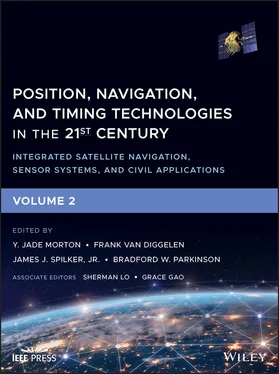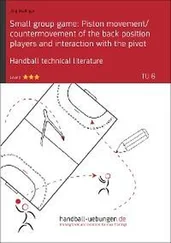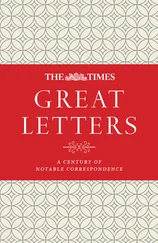22 Chapter 59Table 59.1 GNSS signal‐in‐space (SIS) hazards in the rail environmentTable 59.2 GNSS‐based LDS functionalitiesTable 59.3 Wide lane and narrow lane combination properties
23 Chapter 60Table 60.1 UAS application examples [1]Table 60.2 US National Airspace System (NAS) – Airspace Classifications [11]Table 60.3 Flying small UAS (sUAS) in the United States [14]Table 60.4 Levels of autonomy (LOA) [31]Table 60.5 SAA sensor characteristics [97]Table 60.6 Onboard primary radar characteristics [110]
24 Chapter 61Table 61.1 Spacing between interrogation and reply pulse pairs and reply dela...Table 61.2 Corresponding localizer and glide slope channel frequenciesTable 61.3 Forms of signals used by NDBTable 61.4 Comparison of payload size and transmission times of ADS‐B and relate...
25 Chapter 62Table 62.1 Key attributes of the estimated parameters in the Jason‐2/Jason‐3 ...
26 Chapter 64Table 64.1 Types of ice encountered at sea and their danger to ships (based o...Table 64.2 Aviation navigation requirements [74]Table 64.3 Maritime navigation requirements [10, 75]Table 64.4 Summary of GNSS integrity systems and their performance in the Arc...
1 Chapter 35 Figure 35.1 General navigation framework.
2 Chapter 36 Figure 36.1 Gaussian sum illustration. The random variable x sumis represent... Figure 36.2 MMAE filter implementation. The MMAE filter constructs the state... Figure 36.3 Sample vehicle trajectory and observations. Note that the range ... Figure 36.4 MMAE initial state estimate and position density function. Note ... Figure 36.5 MMAE state estimate (after 22 observations). Range observations ... Figure 36.6 MMAE state estimate (after 100 observations). Note the state est... Figure 36.7 MMAE position error and one‐sigma uncertainty. Note that the err... Figure 36.8 MMAE integer ambiguity particle weights (subset). The correct am... Figure 36.9 Probability density function (PDF) and cumulative density functi... Figure 36.10 Importance sampling used to represent arbitrary density functio... Figure 36.11 Visualization of nonlinear transformation on a random variable.... Figure 36.12 Grid particle filter state estimate and position density functi... Figure 36.13 Grid particle filter state estimate (after 22 observations). Ra... Figure 36.14 Grid particle filter state estimate (after 100 observations). N... Figure 36.15 Grid particle filter position error and one‐sigma uncertainty. ... Figure 36.16 Proposal sampling illustration. In this example, the particles ... Figure 36.17 SIR particle filter initial state estimate and position density... Figure 36.18 SIR particle filter state estimate (after 22 observations). Ran... Figure 36.19 SIR particle filter state estimate (after 100 observations). No... Figure 36.20 SIR particle filter position error and one‐sigma uncertainty. N...
3 Chapter 37 Figure 37.1 Taxonomy of signals for indoor localization. Figure 37.2 Positioning based on angle of arrival (AoA) measurement [27].... Figure 37.3 Positioning based on ToA/RToF measurements [27]. Figure 37.4 Positioning based on time difference of arrival (TDoA) [27]. Figure 37.5 Measured accuracy and Wi‐Fi signal distributions excerpted for a... Figure 37.6 Autocorrelation‐based step cycle detection. The top graph shows ... Figure 37.7 Particle transition near obstacles: if a particle tries to move ... Figure 37.8 (a) Paths traced for various Wi‐Fi scan intervals for LearnLoc u...
4 Chapter 38 Figure 38.1 Cellular systems generations. Figure 38.2 Clock error states dynamics model. Figure 38.3 Mapper and navigator in a cellular environment (Khalife et al. [... Figure 38.4 Forward link modulator (Khalife et al. [18]). Figure 38.5 Forward link sync channel encoder (Khalife et al. [18]; 3GPP2 [5... Figure 38.6 Sync channel message structure (Khalife et al. [18]; 3GPP2 [50])... Figure 38.7 Forward link paging channel encoder (Khalife et al. [18]; 3GPP2 ... Figure 38.8 Paging channel message structure (Khalife et al. [18]; 3GPP2 [50... Figure 38.9 | Z k| 2for (a) unsynchronized and (b) synchronized c Iand c Qcode... Figure 38.10 Carrier wipe‐off and correlator. Thick lines indicate a complex... Figure 38.11 Cellular CDMA signal acquisition front panel showing | Z k| 2alon... Figure 38.12 Tracking loops in a navigation cellular CDMA receiver. Thick li... Figure 38.13 Autocorrelation function of GPS C/A code and cellular CDMA PN s... Figure 38.14 Cellular CDMA signal tracking: (a) code phase error (chips), (b... Figure 38.15 Sync and paging channel timing (Khalife et al. [18]; 3GPP2 [50]... Figure 38.16 Long code mask structure (Khalife et al. [18]; 3GPP2 [50]). Figure 38.17 Message decoding: demodulated sync channel signal (left) and BT... Figure 38.18 Output of the coherent baseband discriminator function for the ... Figure 38.19 Plot of σ , the standard deviation of Δ t , as a function of ... Figure 38.20 BTS environment and experimental hardware setup for the UAV exp... Figure 38.21 Variation in pseudoranges and the variation in distances betwee... Figure 38.22 BTS environment, true trajectory, and experimental hardware set... Figure 38.23 Variation in pseudoranges and the variation in distances betwee... Figure 38.24 Experimental hardware setup, navigator trajectory, and mapper a... Figure 38.25 BTS environment and experimental hardware setup with a mobile m... Figure 38.26 Navigating UAV’s true and estimated trajectory. Figure 38.27 OFDM transmission block diagram (Kassas et al. [6]). Figure 38.28 LTE frame structure (Shamaei et al. [64, 65]). Figure 38.29 Composition of a single LTE frame. The slots represent time, wh... Figure 38.30 Block diagram of the LTE navigation receiver architecture (Sham... Figure 38.31 Signal acquisition block diagram (Shamaei et al. [64, 65]). Figure 38.32 PSS and SSS normalized correlation results with real LTE signal... Figure 38.33 MIB coding process (Shamaei et al. [65]). Figure 38.34 Tail biting convolutional encoder with constraint length 7 and ... Figure 38.35 MIB channel decoding method (Shamaei et al. [65]). Figure 38.36 General structure of downlink physical channels (Shamaei et al.... Figure 38.37 System information extraction block diagram (Shamaei et al. [64... Figure 38.38 LTE SSS signal tracking block diagram (Shamaei et al. [64, 65])... Figure 38.39 LTE SSS tracking results with a stationary receiver (Shamaei et... Figure 38.40 Timing Information Extraction block diagram (Shamaei et al. [64... Figure 38.41 Structure of a DLL employing a coherent baseband discriminator ... Figure 38.42 Output of the coherent baseband discriminator function for the ... Figure 38.43 The standard deviation of the ranging error Δ τ is related ... Figure 38.44 Coherent baseband discriminator noise performance as a function... Figure 38.45 General structure of the DLL to track the code phase (Shamaei e... Figure 38.46 Normalized signal component of non‐coherent discriminator funct... Figure 38.47 Variance of the ranging error in a dot‐product discriminator is... Figure 38.48 DLL performance as a function of C / N 0for non‐coherent discrimi... Figure 38.49 LTE environment layout and experimental hardware setup. Map dat... Figure 38.50 (a) Estimated change in pseudorange and estimated CIR at t = 13... Figure 38.51 (a) Estimated change in pseudorange and estimated CIR at t = 8.... Figure 38.52 (a) Experimental hardware and software setup and environment la... Figure 38.53 Experimental hardware setup and environment layout in Riverside... Figure 38.54 (a) A cellular CDMA receiver placed at the border of two sector... Figure 38.55 The discrepancies ɛ 1and ɛ 2between the clock biases ... Figure 38.56 (a) A realization of the discrepancy ɛ ibetween the observ... Figure 38.57 The (a) acf and (b) psd of e iwith a sampling frequency of 5 Hz... Figure 38.58 Distribution of ζ ifrom experimental data and the estimate... Figure 38.59 Locations of the cellular CDMA BTSs: Colton, California; Rivers... Figure 38.60 Six realizations, five minutes each, of the sector clock bias d... Figure 38.61 Figure (a) represents the number of GPS SVs with an elevation a... Figure 38.62 (a) Sky plot of GPS SVs: 14, 18, 21, 22, and 27 used for the 5 ... Figure 38.63 Experimental results comparing the navigation solution uncertai... Figure 38.64 Tightly coupled cellular‐aided INS framework (Kassas et al. [4]... Figure 38.65 Illustration of simulation results for a UAV flying over downto... Figure 38.66 Experimental results of a UAV aiding its INS with cellular sign...
Читать дальше











